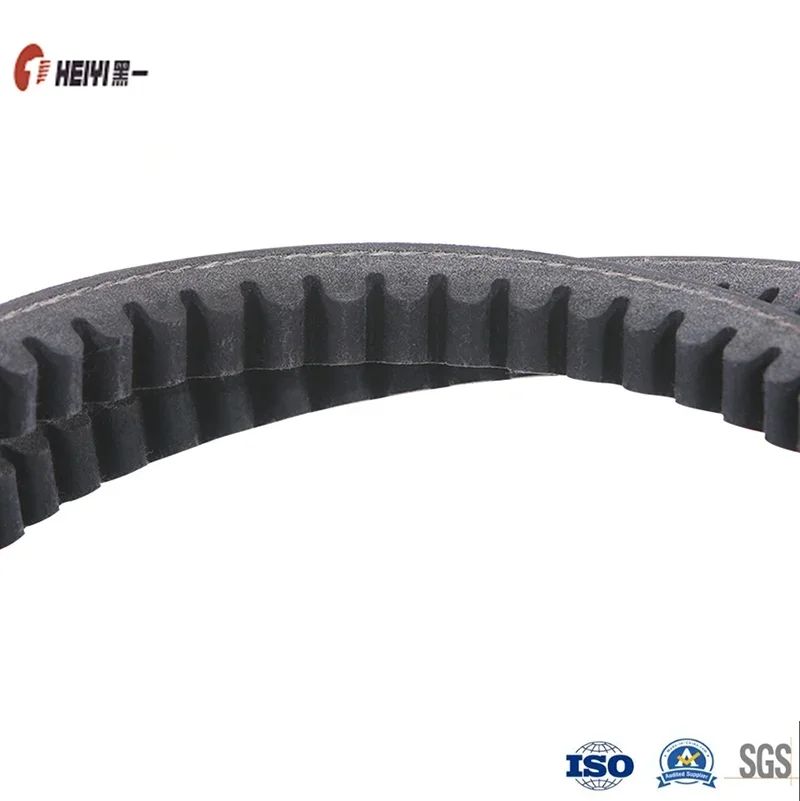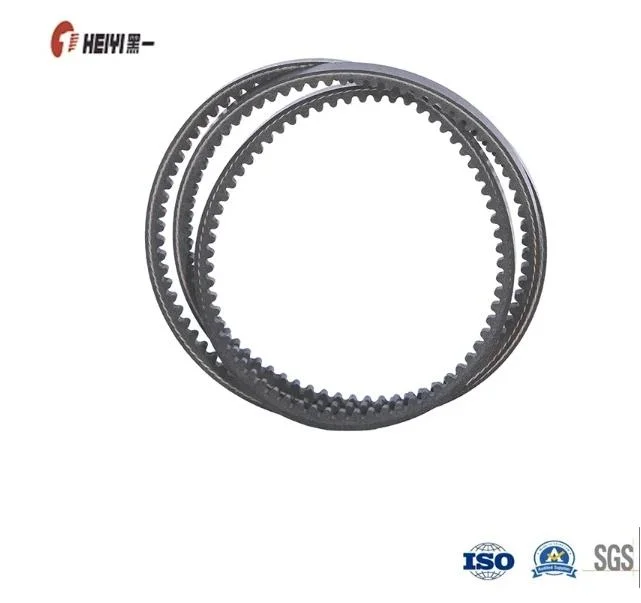In the world of industrial machinery, reliability and durability are of utmost importance. When it comes to power transmission, EPDM rubber V belts have emerged as a reliable choice for heavy-duty applications. These belts are designed to withstand high loads, extreme temperatures, and harsh operating conditions. In this article, we will delve into the details of EPDM rubber V belts, understanding their composition, benefits, applications, and the installation and maintenance procedures associated with them.
Understanding EPDM Rubber V Belts
EPDM, which stands for Ethylene Propylene Diene Monomer, is a synthetic rubber compound known for its excellent resistance to heat, ozone, and weathering. EPDM rubber V belts are made by combining EPDM rubber with reinforcing materials such as polyester or aramid fibers. This combination results in a belt that is not only flexible but also highly resistant to stretching, cracking, and wear.
The V-shaped design of these belts allows for efficient power transmission by maximizing the contact area between the belt and the pulley. This design also helps to prevent slippage, ensuring smooth and reliable operation even under heavy loads. EPDM rubber V belts are available in various sizes and configurations to suit different industrial applications.
Benefits of EPDM Rubber V Belts
EPDM rubber V belts offer several advantages over other types of belts, making them a preferred choice for heavy-duty applications. Some of the key benefits include:
High Temperature Resistance: EPDM rubber V belts can withstand extreme temperatures ranging from -40°C to 120°C (-40°F to 248°F). This makes them suitable for applications where heat is a major concern, such as in automotive engines or industrial machinery operating in hot environments.
Excellent Chemical Resistance: EPDM rubber V belts exhibit exceptional resistance to a wide range of chemicals, including acids, alkalis, and oils. This chemical resistance ensures that the belts remain unaffected by corrosive substances, extending their lifespan and reducing maintenance requirements.
Superior Flexibility and Elasticity: EPDM rubber V belts are highly flexible and elastic, allowing them to adapt to the shape of the pulley without losing their tension. This flexibility ensures smooth power transmission and reduces the risk of belt slippage, even during sudden load changes or start-up operations.
Longevity and Durability: EPDM rubber V belts have a longer service life compared to other types of belts. Their resistance to wear, cracking, and stretching ensures that they can withstand heavy loads and harsh operating conditions without compromising their performance.

Applications of EPDM Rubber V Belts
EPDM rubber V belts find applications in a wide range of industries and machinery. Some of the common applications include:
Automotive Industry: EPDM rubber V belts are widely used in automotive engines to drive various components such as the alternator, water pump, power steering pump, and air conditioning compressor. Their high temperature resistance and durability make them ideal for these demanding applications.
Industrial Machinery: EPDM rubber V belts are extensively used in industrial machinery, including pumps, compressors, generators, and conveyors. These belts provide reliable power transmission, even in heavy-duty applications where high loads and harsh operating conditions are prevalent.
Agriculture: EPDM rubber V belts are employed in agricultural machinery such as tractors, harvesters, and irrigation systems. Their ability to withstand outdoor conditions, including exposure to sunlight and moisture, makes them suitable for these agricultural applications.
HVAC Systems: EPDM rubber V belts are utilized in heating, ventilation, and air conditioning (HVAC) systems to drive the blower motors and fans. Their resistance to heat and weathering ensures reliable performance in these critical applications.
Installation and Maintenance of EPDM Rubber V Belts
Proper installation and regular maintenance are essential to ensure the optimal performance and longevity of EPDM rubber V belts. Here are some key guidelines to follow:
Belt Selection: Choose the appropriate size and configuration of EPDM rubber V belt based on the power requirements and pulley dimensions of the application. Refer to the manufacturer's guidelines or consult with a belt specialist to ensure the correct belt selection.
Belt Tensioning: Proper tensioning of the belt is crucial for efficient power transmission. Use a tension gauge or follow the manufacturer's recommendations to achieve the recommended tension. Over-tensioning or under-tensioning can lead to premature belt failure or reduced performance.
Pulley Alignment: Ensure that the pulleys are properly aligned to prevent excessive belt wear and misalignment issues. Use alignment tools and follow the manufacturer's instructions for aligning the pulleys accurately.
Regular Inspection: Regularly inspect the belts for signs of wear, cracking, or damage. Replace any worn-out or damaged belts promptly to prevent unexpected failures and downtime.
Cleaning and Lubrication: Keep the belts clean and free from debris. Avoid using harsh chemicals or solvents that can degrade the rubber. Apply a suitable belt dressing or lubricant, if recommended by the manufacturer, to enhance belt performance and reduce friction.

Conclusion
EPDM rubber V belts have proven to be a reliable choice for heavy-duty applications due to their high temperature resistance, chemical resistance, flexibility, and durability. These belts find applications in various industries, including automotive, industrial machinery, agriculture, and HVAC systems. By following proper installation and maintenance procedures, users can ensure the optimal performance and longevity of EPDM rubber V belts, minimizing downtime and maximizing productivity in their operations.
Advantages of EPDM Rubber V Belts in Industrial Applications







